7 Health Tests You May Not Need
Over-testing can add costs and could reduce your quality of care.
Updated on March 27, 2024
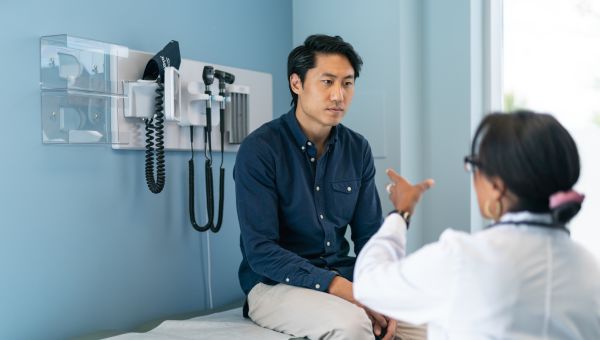
When your healthcare provider orders a medical test, chances are you trust their clinical judgment. But certain tests may be unnecessary—and could even do more harm than good.
“Besides the extra cost, some tests have risks, such as the radiation from imaging tests,” says Keith Roach, MD, Associate Professor in Clinical Medicine in the division of general medicine at Weill Cornell Medical College and New York Presbyterian Hospital.
Other tests could show a false positive result, which can lead to needless worry and invasive follow-up procedures.
To reduce the burden of over-testing, you may want to get a second opinion regarding tests with higher risks, such as those that use radiation. Beyond that, medical organizations have come up with short lists of common procedures that may not be necessary, such as the following.
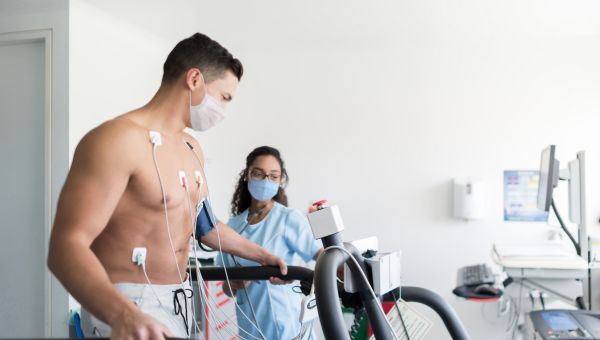
Regular ECGs or Stress Tests
For many people, a routine physical exam includes an electrocardiogram (ECG), a screening that uses electrodes to show the heart’s electrical activity. Or, it may include a stress test, which can involve having an ECG done while walking on a treadmill or taking medications to stress the heart.
But if you don’t have symptoms and are at low risk for heart disease, you may want to verify these tests are really needed by getting a second opinion. According to the U.S. Preventive Services Task Force (USPSTF), there’s no proof they will prevent heart attacks or help you live longer.
When you may need them: If you have symptoms of heart disease, such as chest pain, shortness of breath, palpitations, or irregular heartbeat. You may also require one if you have a risk factor for heart disease, such as diabetes or hypertension.
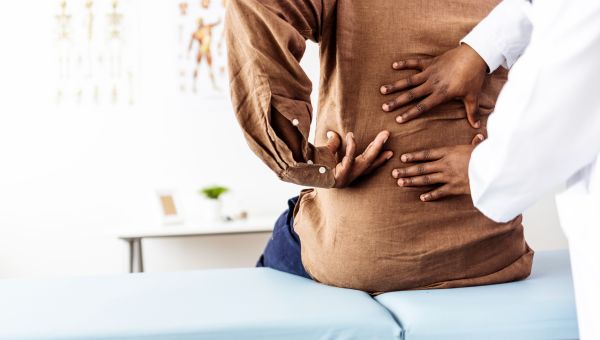
Scans for Back Pain
Battling an aching back? You’re not alone. Low back pain is a common reason people see a provider. Getting an X-ray, a computed tomography (CT) scan, or magnetic resonance imaging (MRI) may seem like a good way to pinpoint the problem, but these may not be needed. In fact, imaging for uncomplicated low back pain was found to be among the most common forms of over-testing in a 2022 review published in BMJ Quality & Safety.
Most low back pain is acute and tends to go away on its own within a few days. In rare cases, short-term back pain takes a few months to resolve.
When you may need them: If you have other symptoms such as weakness, numbness, or unexplained weight loss. Speak with your physician if you’ve experienced chronic low-back pain for longer than six weeks.

Yearly Pap Smears
Pap tests are often part of a gynecological checkup to detect cervical cancer. But annual Paps are not recommended for most people, as this is a slow-growing malignancy that generally takes years to develop. Instead, the American College of Obstetricians and Gynecologists and USPSTF advise:
- Women between ages 21 and 29 should have a Pap test every three years.
- Women ages 30 to 65 should have a Pap test and human papillomavirus infection (HPV) test every 5 years. Or, they may choose to get a Pap test alone every three years, or an HPV test alone every 5 years.
Women ages 65 and older don’t need to screen if they have had normal, regular screening results over the past decade, plus no moderately abnormal cells and no serious cervical issue within the past 25 years.
When you may need them: At any age, you may need more frequent Pap smears if you are at high risk for cervical cancer. This includes women who have received treatment for an abnormal Pap smear or cervical cancer, or who have a weakened immune system. For women age 65 and older, this also includes those whose mothers took a hormone called diethylstilbestrol (DES) while they were pregnant.
Always speak with an HCP to discuss your risk and recommendation for screening.
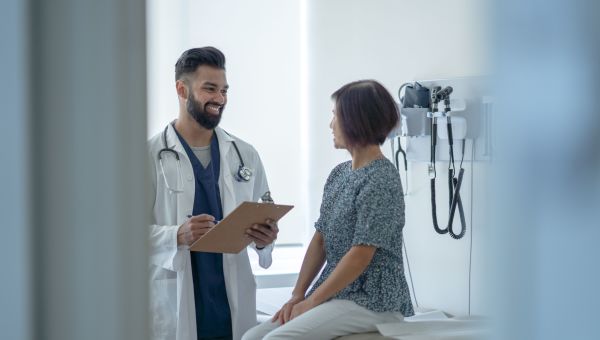
Bone Density Scan
A central dual-energy X-ray absorptiometry (DEXA) imaging scan—bone density scan—is a common screening tool for osteoporosis, which occurs when bones become weak or lose too much mass. Women younger than 65 and men under age 70 usually don’t have the condition. Instead, they’re often diagnosed with osteopenia, or low bone density, which is frequently a precursor to osteoporosis.
The DEXA scan itself does not cause harm and could help establish a baseline for future DEXA scans. However, the issue with getting diagnosed with osteopenia is that your healthcare provider may prescribe drugs for osteoporosis. These can cause side effects, such as nausea and heartburn, and may not benefit osteopenia.
When you may need it: Women aged 65 and older with normal bone mass or mild bone loss should have the DEXA test every 15 years, or more often if they show a low bone mass density.
Men of any age and postmenopausal women under 65 may need a DEXA scan if they are at increased risk for osteoporosis. Risk factors include a history of corticosteroid use, low body weight, or rheumatoid arthritis.

Head CT Scan for Injured Kids
About half of children who go to the emergency room with a head injury are given a CT scan. But in one in three of these cases, they’re not necessary.
If it’s a mild concussion, your healthcare provider may just need to watch and wait, says Jack Percelay, MD, former chair of the American Academy of Pediatrics (AAP) Committee on Hospital Care. The AAP recommends providers do a medical checkup and ask questions regarding the injury and symptoms. This approach can prevent a child—whose brain is still developing—from receiving excessive radiation: “Children’s brain tissue is sensitive to radiation, which may increase the risk for a brain tumor,” he says.
When kids may need it: If they experience loss of consciousness, have seizures, vomit more than two or three times, or exhibit strange behavior after a head injury, call 911 right away. These are emergency symptoms and can warrant a head CT.
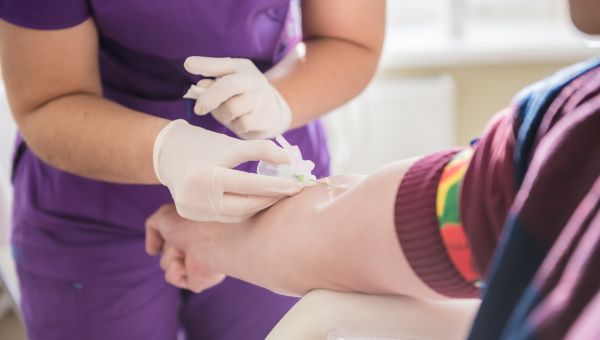
Vitamin D Test
It’s estimated that one-third to one-half of American adults don’t get enough vitamin D. But this doesn’t mean you need a blood test to screen for deficiency. In April 2021, the USPSTF found a lack of evidence showing the benefits of vitamin D screenings for most people who don’t show signs of being deficient.
There are simple ways to help make sure you’re getting enough vitamin D, like taking a multivitamin and eating foods such as fatty fish (salmon, tuna, etc.), eggs, and fortified cereals. Getting some sunlight can help, too. Just remember to use sunscreen if you’ll be outdoors more than 10 minutes.
When you need it: If you have certain risk factors, you may need a test to determine if you have a significant deficiency. These include people who:
- Have a known bone disorder
- Have a condition that damages the body’s ability to absorb vitamins
- Are taking certain medications, including some that treat seizures and AIDS/HIV
Speak with your HCP to discuss your risk and recommendation for screening.

Brain Scans for Headaches
A CT scan, MRI, or electronencephalography (EEG, a test where electrodes measure the brain’s electrical activity) can identify whether your headache is caused by a tumor or more serious condition. But these pricey screenings are rarely necessary for most headaches. What’s more, CT scans deliver 250 times the radiation as a chest X-ray.
When you may need it: A brain scan may be necessary if you have sudden or explosive head pain, or if your headache is accompanied by vomiting, a seizure, loss of coordination, or a change in vision or speech. Dial 911 immediately if you develop any of these symptoms, as they signal an emergency health issue.

Koh ES, Lee AY, Ehdaie B, & Marti JL. Comparison of US Cancer Center recommendations for prostate cancer screening with evidence-based guidelines. JAMA Internal Medicine. 2022;182(5), 555-556.
Penn Medicine. 4 Silent Heart Attack Signs. Page last reviewed: April 4, 2022. Accessed July 27, 2022.
Alonso A, Aparicio FHJ, Benjamin EJ, et al. Heart disease and stroke statistics—2021 update. Circulation. 2021;(143), e00-e00.
U.S. Preventive Services Task Force. Cardiovascular Disease Risk: Screening With Electrocardiography. Page last reviewed: June 12, 2018. Accessed July 27, 2022.
Müskens JL, Kool RB, van Dulmen SA, & Westert GP. Overuse of diagnostic testing in healthcare: a systematic review. BMJ Quality & Safety. 2022;31(1), 54-63.
National Institute of Neurological Disorders and Stroke. Low Back Pain Fact Sheet. Page last reviewed: April 25, 2022. Accessed July 27, 2022.
Jenkins HJ, Downie AS, Moore CS, French SD. Current evidence for spinal X-ray use in the chiropractic profession: a narrative review. Chiropr Man Therap. 2018 Nov 21;26:48.
Fontham, E. T., Wolf, A. M., Church, T. R., Etzioni, R., Flowers, C. R., Herzig, A., … & Smith, R. A. (2020). Cervical cancer screening for individuals at average risk: 2020 guideline update from the American Cancer Society. CA: a cancer journal for clinicians, 70(5), 321-346.
Mount Sinai. Cervical Cancer. Accessed July 27, 2022.
Centers for Disease Control and Prevention. Cancer: Some Older Women Are Not Getting Recommended Cervical Cancer Screenings. Last Reviewed: July 13, 2022.
Jin J. Screening for osteoporosis to prevent fractures. JAMA. 2018; 319(24), 2566-2566.
Sarafrazi N, Wambogo EA, Shepherd JA. Osteoporosis or low bone mass in older adults: United States, 2017–2018. NCHS Data Brief, no 405. Hyattsville, MD: National Center for Health Statistics. 2021.
The American College of Obstetricians and Gynecologists. Osteoporosis. Page last reviewed: December 2018. Accessed July 27, 2022.
American Academy of Pediatrics. CT Scans for Children with Head Injuries. Page last reviewed: March 2014. Accessed July 27, 2022.
Krist A H, Davidson KW, Mangione CM, et al. Screening for vitamin D deficiency in adults: US preventive services task Force recommendation statement. JAMA. 2021;325(14), 1436-1442.
American Cancer Society. Understanding Radiation Risk from Imaging Tests. Page last reviewed: August 3, 2018.
U.S. Preventive Services Task Force. Cervical Cancer: Screening. August 21, 2018. Accessed July 27, 2022.
The American College of Obstetricians and Gynecologists. Updated Cervical Cancer Screening Guidelines. April 2021. Accessed July 27, 2022.
U.S. Preventive Services Task Force. Osteoporosis to Prevent Fractures: Screening. June 26, 2018. Accessed July 27, 2022.
Bello MO, Sombra LRS, et al. Osteoporosis in Males. StatPearls. Treasure Island (FL): StatPearls Publishing; 2022 Jan-.
Forrest KY, Stuhldreher WL. Prevalence and correlates of vitamin D deficiency in US adults. Nutr Res. 2011 Jan;31(1):48-54.
Sizaar O, Khare S, et al. Vitamin D Deficiency. StatPearls. Treasure Island (FL): StatPearls Publishing; 2022 Jan-.
ChoosingWisely.org (AAFP). Bone-Density Tests. May 2012. Accessed July 28, 2022.
Harvard TH Chan School of Public Health. Vitamin D. January 2022. Accessed July 28, 2022.
National Health Service (UK). Vitamin D. August 3, 2020. Accessed July 28, 2022.
MedlinePlus. Vitamin D Test. June 2, 2022. Accessed July 28, 2022.
U.S. Preventive Services Task Force. Vitamin D Deficiency in Adults: Screening. April 13, 2021. Accessed July 28, 2022.
American Association of Clinical Endocrinologists. Vitamin D Deficiency. 2019. Accessed July 28, 2022.
Rho YI, Kim SH, et al. EEG Characteristics and Diagnostic Implications in Childhood Headache: A Multi-Center Study. Frontiers in Neurology. 2020 Oct 8;11:569486.
ChoosingWisely.org (AAFP). Imaging Tests for Headaches. April 2012. Accessed July 28, 2022.
Cedars-Sinai. Encephalitis. 2021. Accessed July 28, 2022.
HealthyChildren.org (AAP). Head Injury in Children: How to Know If It's Minor or Serious. Last updated February 7, 2022. Accessed July 28, 2022.
More On


video

article

slideshow


video


video
